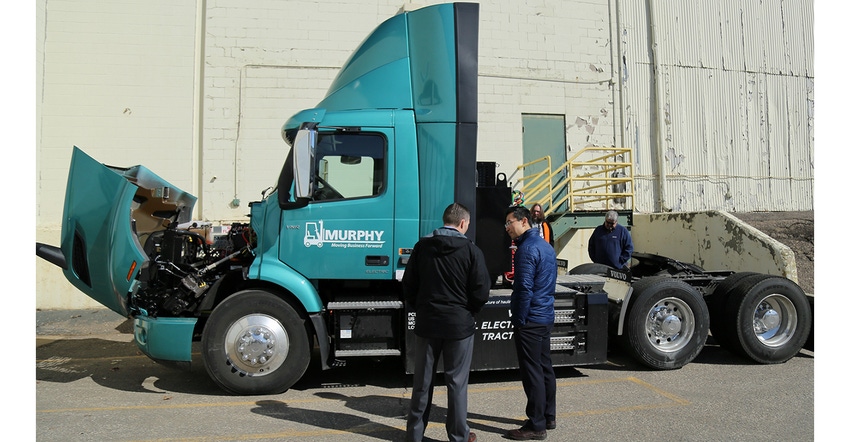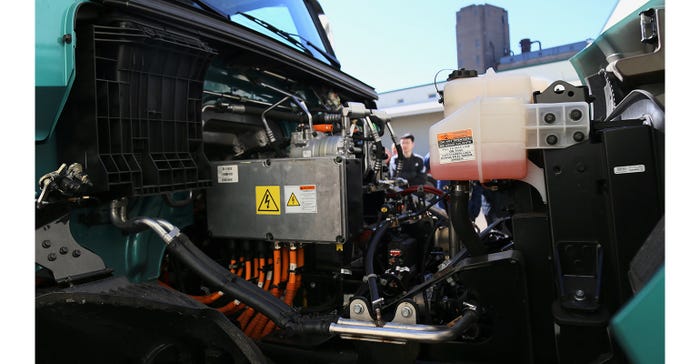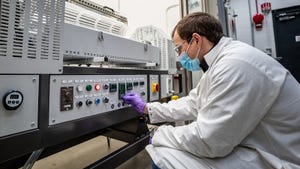Volvo Trucks Tests Extremes of EV Battery Thermal Management
Extreme temperatures can sap battery performance—but optimized battery-pack preconditioning could help. Volvo Trucks North America is testing the limits.
July 19, 2023

To combat the detrimental effects of extreme cold and hot temperatures on the performance of regional-haul electric truck batteries — and even influence vehicle design — Volvo Trucks North America (VTNA) is exploring a new battery pack preconditioning routine.
The goal: Improve freight productivity of heavy-duty (HD) Battery Electric Vehicles (BEV) by intelligent energy management, explained Keith Brandis, vice president of system solutions and partnerships for VTNA. Cold testing has begun, with hot testing coming later this summer.
“This research project will gather data on the outside ambient temperature versus the battery pack internal temperatures, performance, and range for the truck in real-world operations,” Brandis explained. “We expect improvement areas will include route optimization, driver training, identification of opportunity charging, and changes in vehicle design.”
Heaters, liquid-cooling—and BTMS
As opposed to air-cooled light-duty automotive batteries, heavy-duty electric truck batteries used by Volvo are liquid-cooled. VTNA uses heaters, cooling pumps and fans to continuously moderate and precondition its battery pack temperatures.

A dedicated Battery Thermal Management System (BTMS) is included with the Volvo VNR Electric model to manage and maintain the optimum battery temperature range. The BTMS is a dedicated heating and cooling system connected to the batteries to avoid chemical reaction slowdown or potential cell damage in extreme conditions. This, in turn, improves battery life and performance under various weather conditions.
For these trials, VNR Electric trucks leave their warehouse with 100% charge and return near empty at the end of their routes so researchers can analyze data from each truck’s six-battery range performance.
Volvo is the prime contractor in this three-year government-funded project, along with the University of Minnesota and several customers, Brandis noted.
Test algorithms and machine learning
University researchers “created a freight performance model/baseline, test algorithms on each variable—ambient temperature, speed, weight, road conditions—and applied machine learning to find improvement areas,” he explained.

Previous studies have focused primarily on light-duty automotive applications and vehicle designs, he added. “We need to compare performance with our US and Canadian customer base in typical local and regional-haul applications. Liquid-cooled battery packs are expected to maintain battery performance closer to optimum ambient temperatures, despite the location. The study will provide findings on the actual performance of the vehicle.”
While initial results have not supported any conclusions yet, “we are encouraged that the preconditioning of the battery pack internal temperatures is effective to mitigate some of the battery chemistry performance.”
So far, preconditioning battery packs for cold testing optimized them for faster charging and longer range—which suggests different preconditioning curves to further optimize battery pack readiness and capacity. VTNA engineers can reprogram trucks by using real-time data to push incremental improvements to trucks in the field.
Brandis suggested the following hoped-for outcomes:
Cold temperatures are expected to somewhat lower the battery chemistry output in addition to, the use of the cab heater for the driver.
Hot temperatures are expected to affect the overall battery lifetime. However, Volvo Trucks uses a different chemistry for both long life and the highest energy density.
Commercial customers expect long equipment life with the ability to remanufacture components and extend operations for many years.
After testing in below-freezing temperatures in Minnesota, VTNA will conduct hot-weather tests on a typical 250-mile route in Texas during peak heat and humidity.
“The project is scheduled to end later this year,” Brandis said. “Our findings will be shared with the Department of Energy, Office of Energy Efficiency and Renewable Energy in a complete report.”
About the Author(s)
You May Also Like





